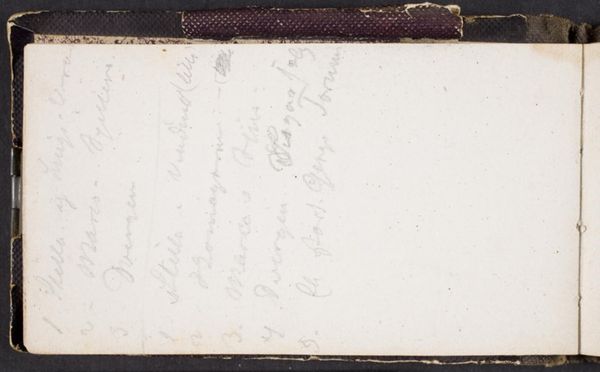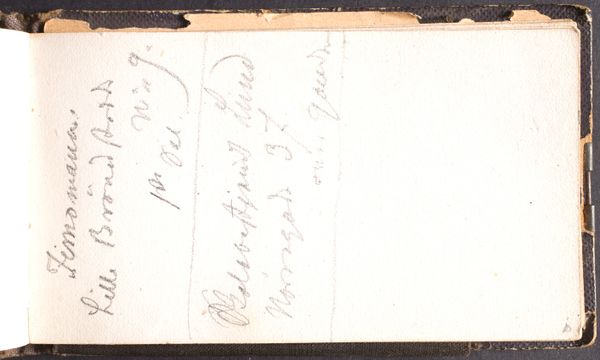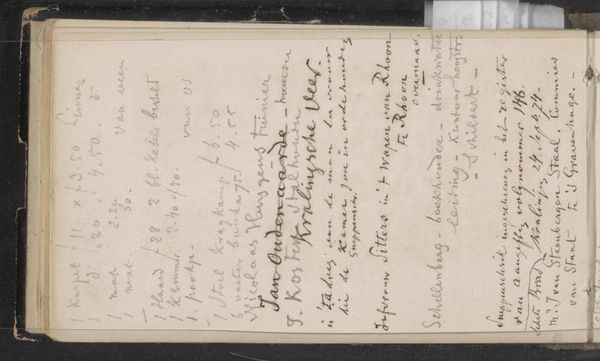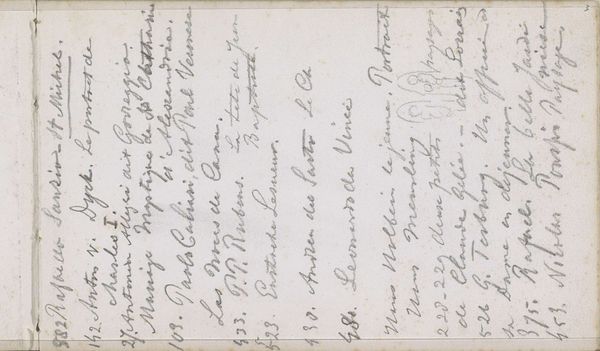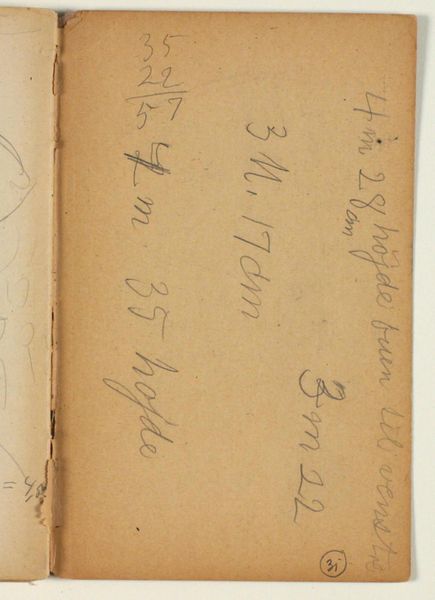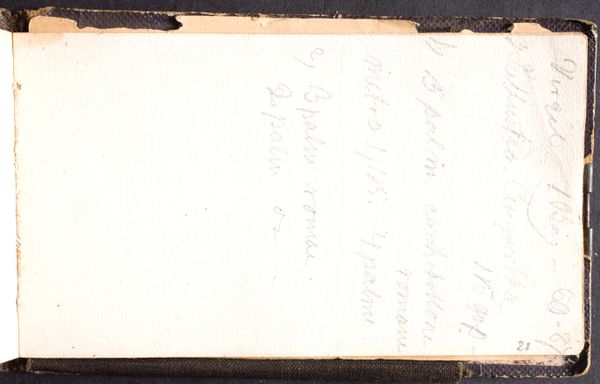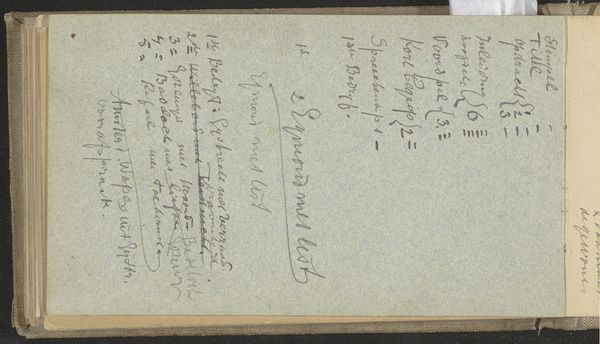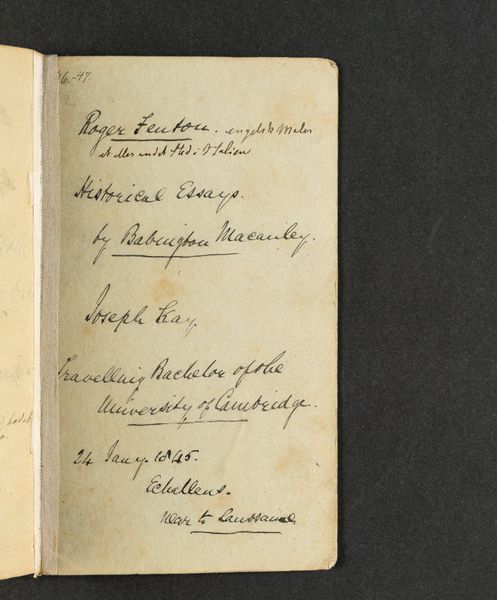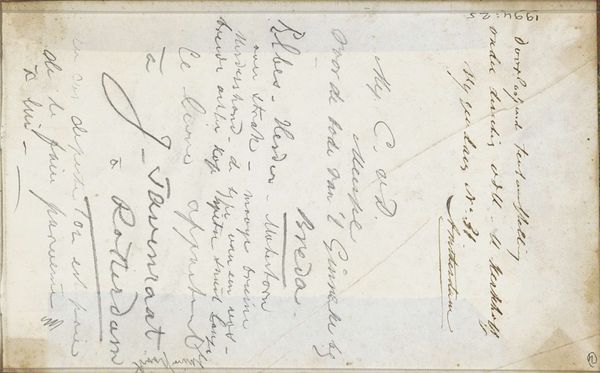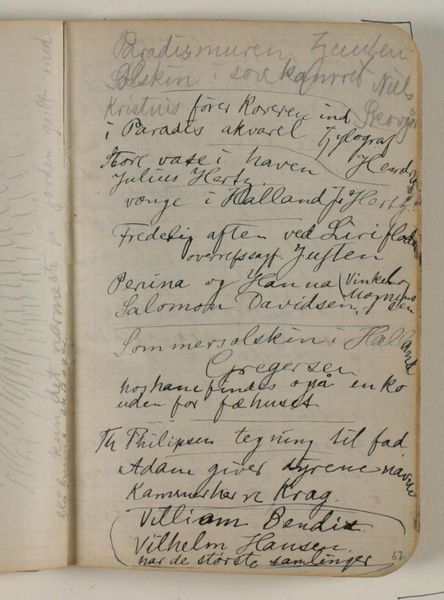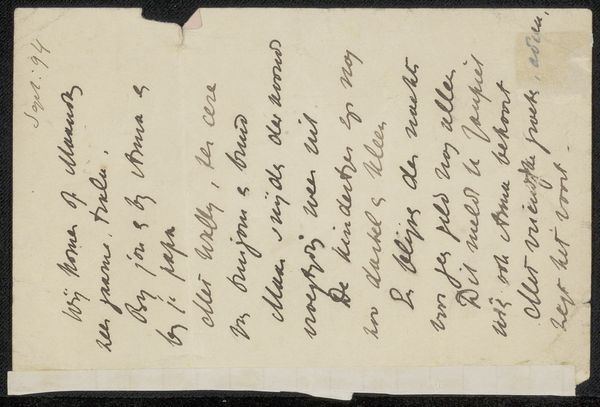
drawing, paper, ink
#
drawing
#
paper
#
ink
#
line
#
miniature
Dimensions: 71 mm (height) x 118 mm (width) x 14 mm (depth) (monteringsmaal), 63 mm (height) x 113 mm (width) (bladmaal)
Curator: Isn’t it enchanting how even a mundane list can become a little time capsule? What are your first thoughts on this little work? Editor: Austere, perhaps surprisingly so. The simple lined paper, the meticulous handwriting. It gives the impression of something utilitarian, meant for reference alone. A decidedly different impression of “art,” really. Curator: This is a drawing by L.A. Schou called "Addresses in Florence, Milan, and Dresden." It dates from around 1864 to 1867, and it's crafted with ink on paper. You are so right, it really challenges our assumptions of ‘art’. But it’s more than just a list—it’s a series of fragmented memories. Imagine Schou travelling and meticulously noting these addresses, each one linked to his own fleeting experiences of cities he visited. Editor: The formal qualities definitely enhance this effect. The spartan line work, for example, feels less illustrative and more akin to cartography or even…code. Each stroke seems functional. And that uniformity makes it fascinating because if you strip all the sentimental values of place, what remain are abstract marks in time and space. Curator: Beautifully put! There’s such tenderness in it. To me, each word evokes untold encounters—the elegant curve of 'Florence' speaks of sun-drenched piazzas, 'Hotel' whispers of temporary sanctuary. Maybe these are even names of people or loves he’s encountered…it’s like a painterly way of saving time that echoes across generations. And here it is: evidence of a past brought vividly into our present, now kept at the SMK—Statens Museum for Kunst. Editor: Precisely, by reframing ephemera. We strip away the banality and reveal the structural, revealing the bones and making way for us to fill in the gaps and invent meaning in ways perhaps even transcending the artist's intention. Curator: Maybe that’s the best kind of art then: where form and feeling become uniquely our own? Editor: Indeed. Now I am looking at Schou's little address book and visualizing my own, and I get it now. What a piece!
Comments
No comments
Be the first to comment and join the conversation on the ultimate creative platform.
